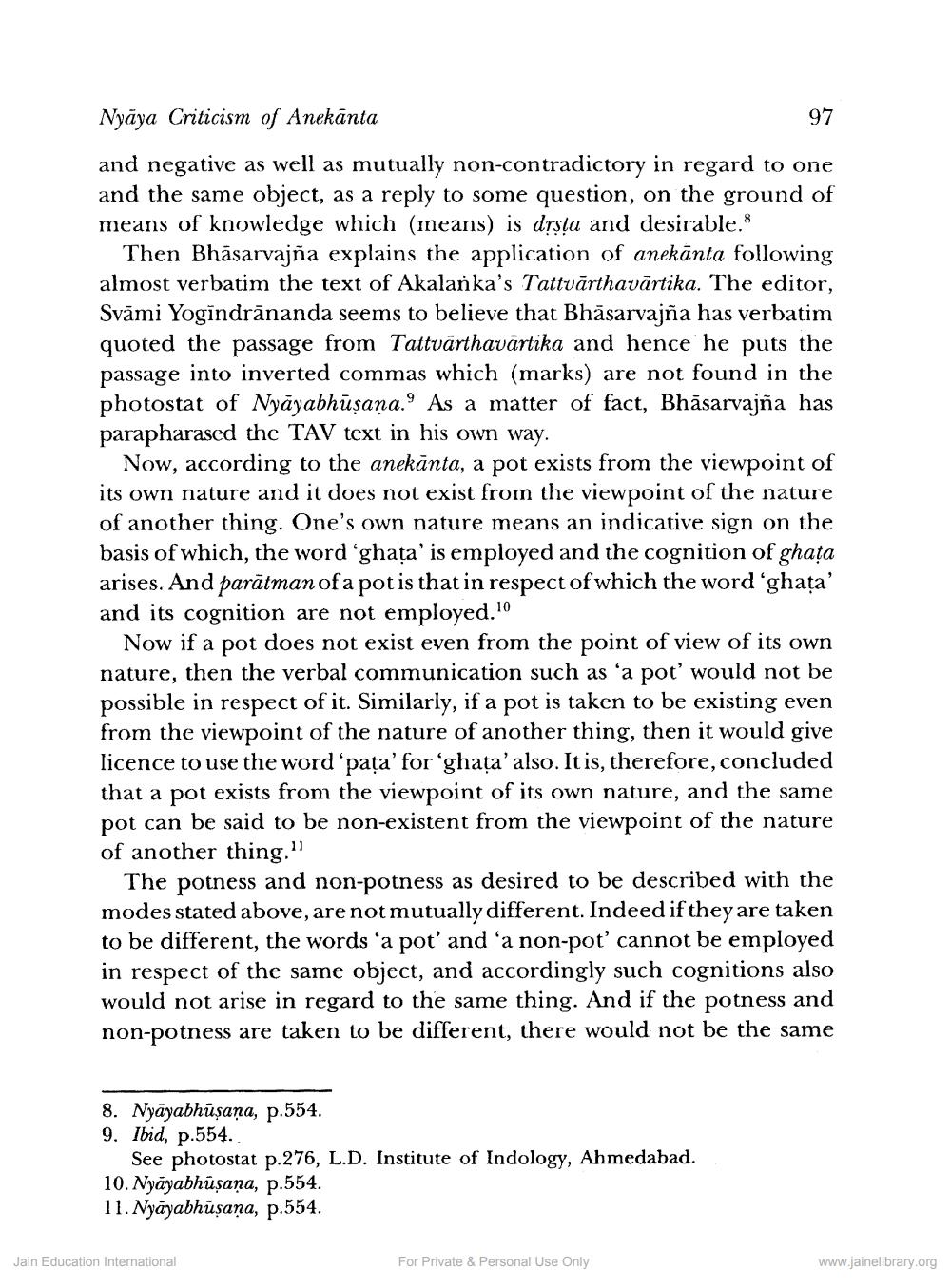________________
Nyāya Criticism of Anekānta
97
and negative as well as mutually non-contradictory in regard to one and the same object, as a reply to some question, on the ground of means of knowledge which (means) is drsta and desirable.8
Then Bhāsarvajña explains the application of anekānta following almost verbatim the text of Akalanka's Tattvārthavārtika. The editor, Svāmi Yogîndrānanda seems to believe that Bhāsarvajña has verbatim quoted the passage from Tattvārthavārtika and hence he puts the passage into inverted commas which (marks) are not found in the
notostat of Nyāyabhūsana.As a matter of fact, Bhāsarvajña has parapharased the TAV text in his own way
Now, according to the anekānta, a pot exists from the viewpoint of its own nature and it does not exist from the viewpoint of the nature of another thing. One's own nature means an indicative sign on the basis of which, the word 'ghata' is employed and the cognition of ghata arises. And parātman of a pot is that in respect of which the word ghata’ and its cognition are not employed."O
Now if a pot does not exist even from the point of view of its own nature, then the verbal communication such as 'a pot' would not be possible in respect of it. Similarly, if a pot is taken to be existing even from the viewpoint of the nature of another thing, then it would give licence to use the word 'pața' for 'ghata'also. It is, therefore, concluded that a pot exists from the viewpoint of its own nature, and the same pot can be said to be non-existent from the viewpoint of the nature of another thing."
The potness and non-potness as desired to be described with the modes stated above, are not mutually different. Indeed if they are taken to be different, the words ‘a pot' and 'a non-pot' cannot be employed in respect of the same object, and accordingly such cognitions also would not arise in regard to the same thing. And if the potness and non-potness are taken to be different, there would not be the same
8. Nyayabhūşaņa, p.554. 9. Ibid, p.554.
See photostat p.276, L.D. Institute of Indology, Ahmedabad. 10. Nyāyabhusana, p.554. 11. Nyayabhusana, p.554.
Jain Education International
For Private & Personal Use Only
www.jainelibrary.org




